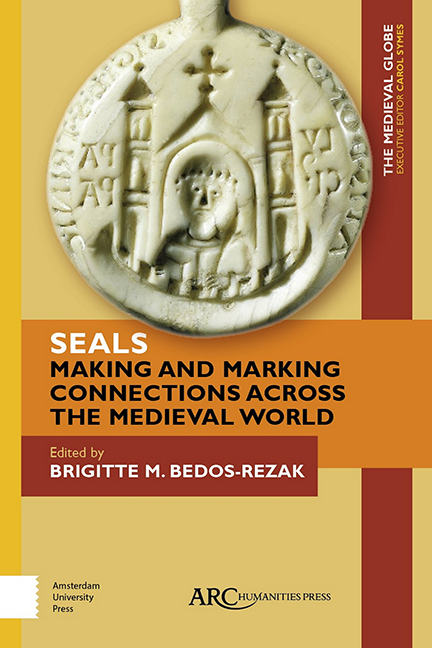Book contents
- Frontmatter
- Contents
- List of Illustrations
- Acknowledgements
- Cultural Transactions: An Introduction to Medieval Seals from a Global Perspective
- Seals as Conceptual and Ritual Tools in Chinese Buddhism, ca. 600– 1000 CE
- Imprinting Powers: The Astrological Seal and Its Doctrinal Meanings in the Latin West
- A Medieval Solution to an Early Modern Problem? The Royal Animal Seals of Jambi
- Expressing New Rule: Seals from Early Islamic Egypt and Syria, 600– 800 CE
- The Formulation of Urban Identity on Byzantine Seals
- The Cloth Seal: A Mark of Quality, Identification, or Taxation?
- Archaeology and Sigillography in Northern Europe
- Medieval Treaties and the Diplomatic Aesthetic
- Index
Cultural Transactions: An Introduction to Medieval Seals from a Global Perspective
- Frontmatter
- Contents
- List of Illustrations
- Acknowledgements
- Cultural Transactions: An Introduction to Medieval Seals from a Global Perspective
- Seals as Conceptual and Ritual Tools in Chinese Buddhism, ca. 600– 1000 CE
- Imprinting Powers: The Astrological Seal and Its Doctrinal Meanings in the Latin West
- A Medieval Solution to an Early Modern Problem? The Royal Animal Seals of Jambi
- Expressing New Rule: Seals from Early Islamic Egypt and Syria, 600– 800 CE
- The Formulation of Urban Identity on Byzantine Seals
- The Cloth Seal: A Mark of Quality, Identification, or Taxation?
- Archaeology and Sigillography in Northern Europe
- Medieval Treaties and the Diplomatic Aesthetic
- Index
Summary
When considering metals, in book XXXIII of his Natural History, Pliny the Elder (d. 79 CE) broached the topic of sealing:
For my own part, I do not find that any rings were used in the days of the Trojan War; at all events, Homer nowhere makes mention of them; for although he speaks of the practice of sending tablets by way of letter, of clothes and gold and silver plate being kept laid up in chests, still he gives us to understand that they were kept secure by the aid of a knot tied fast, and not under a seal impressed by a ring. … And even at the present day, the greater part of the nations known to us, peoples who are living under the Roman sway, are not in the habit of wearing rings. Neither in the countries of the East, nor in Egypt, is any use made of seals, the people being content with simple writing only.
Pliny's remarks are not entirely accurate but his perception that the use of seals was sporadic and culturally contingent, rather than sequential and universal, contrasts sharply with the modern understanding of the practice.
The use of seals, both for authenticating and closing, descends, in unbroken succession, from the cylindrical seals of Assyria and Babylon and the cone shaped ones of Persia and the Sassanians, through the scarabs of the Egyptians and Etruscans, to Greece … . Either from Greece or Asia Minor, the seal passed to the Romans … The Frankish kings … affixed a signet to their acts, thus forming the connecting link between the use of the signet by the Romans and its revival as a seal in mediaeval times.
Thus wrote Charles Hunter Blair (d. 1962) in an excellent article informed by his deep knowledge of medieval seals acquired while cataloging the seals attached to the charters of the Benedictine monastery at Durham. Not specific to Blair, such vision of a linear and agentless flow of spatiotemporal continuity has engendered its own permanence.
Information
- Type
- Chapter
- Information
- Publisher: Amsterdam University PressPrint publication year: 2019
